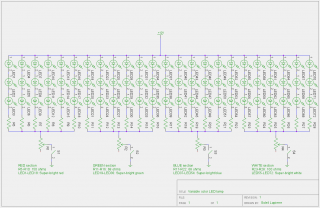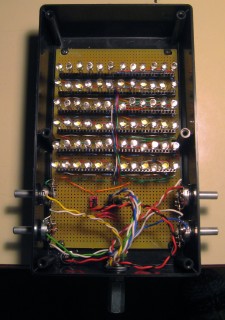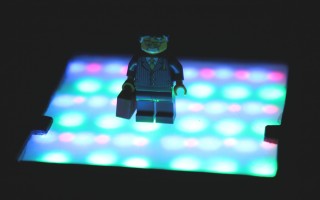Accomplishments for 2012
I don’t make New Year resolutions – why set myself up for failure? Instead I think it’s more positive to review what I’ve accomplished in the previous year, and it serves as encouragement to do more in the coming year without having to specify what in advance.
1) The most personally important thing I did in 2012 was to get my wisdom teeth removed – all four of them. They were impossible to clean and had been poisoning me and thwarting progress towards fixing my dental situation. This was a big step for me, because when I was a teenager a dentist told me my lower wisdom teeth were impacted and I would have to go for jaw surgery to get them removed. He described it as having my jaw broken on both sides and then having my mouth wired shut for a couple of months while it healed. For some reason that put me off dentists for a while. More than ten years, in fact. Finally I couldn’t ignore the problem any longer so I went for more opinions. It turned out they were no longer impacted as badly and could be pulled without surgery. I had it done under IV sedation (because I’m a severe gagger) in March. It was miraculous – my only experience of the operation was a strange dream, and there was no swelling or any other complication afterwards. I’m so glad that part is over with.
2) I took my first overseas trip this year, visiting Hawaii for a week, getting a grand tour of the Big Island from my friend Phloem, and watching the rare transit of Venus from up on Mauna Kea. On the way back I visited San Francisco, also for the first time. My trip included several other firsts: Swimming in the ocean, snorkelling, visiting a volcano, banyan trees, malasadas and burritos.
3) I took an online design course to gain some breadth, and designed a built a piece of furniture for myself. While it may not seem remarkable in itself, it was an accomplishment for me because I’ve never done anything significant with wood and woodworking tools before, and it turned out better than I had hoped. I’m proud of both the design and the construction of this artifact.
4) Finally, I continued to make incremental progress in my ongoing life cleanup process. I digitized some more of my film (now up to 60/250 rolls done), eliminated a dozen boxes of old computer hardware and other junk from storage, grabbed a bunch of my vanity domain names (except my dot-name, which is blocked by an illegal registration) and started putting together a new personal website.
I’m happy to have accomplished stuff this year, and look forward to doing more in future.
A thing I have finished
I’ve been craving a feeling of accomplishment for a long time, and I promise myself that over the Christmas holidays I would make an effort to finish at least one of my personal projects. And I did! And it feels good.
For a while I’ve been needing some bright lights for my macro photography, and also wanting some bright color accent lights. I bought this from ThinkGeek. It has the advantage of simply plugging into a standard light socket, and has sixteen different color settings. I found it still a bit too dim, and some of the colors were off – blue especially looked too purple for me.
So I decided to make my own – a larger one using multiple super-bright LEDs of four colors (red, green, blue and white) arranged in a mosaic with a diffusing filter in front to mix the colors. With this arrangement I should be able to get a much better variety of colors, and using multiple LEDs would give me more brightness.
I based the physical design around available enclosures, protoboards and power supplies. I don’t like working with high voltages (they tend to be a bit killey) so I’ll always use an off-the-shelf power supply if I can. I decided on a 12V, 1A supply I had on hand because using a higher voltage would let me place the LEDs more in series, thus reducing the current requirements and the number of current limiting resistors I would need. Most super-bright LEDs have voltage drops between 3V and 4V, so that let me put them in series of three.
Here’s the schematic (click to embiggen):
I decided to socket the LEDs in female header strips instead of soldering them to the protoboard, in case I burnt some of them out and needed to replace them. In practice this perhaps wasn’t such a good idea; it complicated the physical layout of the circuit on the protoboard, and generated problems with loose connections between the LED leads and the sockets. I could probably solve the latter problem well enough by bending the ends of the leads slightly, but it seems to work well enough if I don’t shake it too much, and it’s easy to fix if a connection fails.
Here’s a picture of the finished board, populated with LEDs, installed in the enclosure I picked for it.
You can see the four brightness control potentiometers installed on the sides. At the bottom is a cheap tripod mount I made with a quarter-inch bolt and bolt joiner.
The next picture shows the reflective, scattering backdrop I put the LEDs through to help blend the colors. Since I was planning to put a diffuser in front of the LEDs, I figured there would be a lot of light back-scattered and so I should put a reflector at the back to stop some of the light from being wasted.
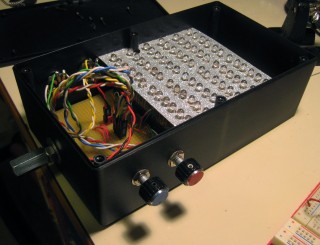 I also added the color-coded knob handles to the controls in this shot.
I also added the color-coded knob handles to the controls in this shot.
And finally, here it is with the diffuser on the front:
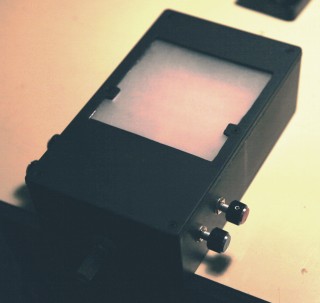 I made the diffuser myself by cutting a thin sheet of clear Perspex to size, then grinding both sides with coarse and then smooth sandpaper. It worked out well.
I made the diffuser myself by cutting a thin sheet of clear Perspex to size, then grinding both sides with coarse and then smooth sandpaper. It worked out well.
Although I had intended the light to be mounted vertically on top of a tripod or light stand, someone pointed out to me at this point that it could also be used horizontally as a small light table. It kind of looks like a disco floor when used this way:
And now, the results! To see if my project achieved its goals of brighter light and better color than the light I bought from ThinkGeek, I shot the following series of images (click to enlarge please). All images were shot using the same exposure and a fixed color temperature of 5400K. The upper row shows the primary colors of the ThinkGeek light, and the lower row is mine. Mine has an extra photo for white – the dim one is just the white LEDs, and the bright one is with all LEDs on at full intensity.
Conclusions:
- Mine is not as much brighter as I had hoped (perhaps half a stop for individual colors) but it is still brighter. The full-on white is considerably brighter.
- Mine has a slightly more bluish blue.
- The diffuser/reflector arrangement worked out well; when used as subject lighting rather than as a light table, the color mixture is very smooth. I could get more brightness by using a clear front panel instead of a diffuser, but then the colors would be less evenly mixed.
- Mine consumes slightly more power (9W versus their 7W) but that’s not a huge difference.
- Mine can produce a much wider variety of colors by virtue of having separate analog brightness controls for each of the four color components.
- Mine produces softer shadows on small objects because the light-emitting surface is relatively large; the ThinkGeek light is almost a point source so gives hard shadows.
TED addiction sets in
I’m really starting to like TED talks. They’re short, often you can just listen to them without the visuals, the presenters are usually skilled and entertaining, and there are lots of interesting topics. Here are a few favorites out of what I’ve watched so far. More to come!
Neuroscience:
VS Ramachandran on your mind – He talks about an assortment of neurological disorders and treatments, none of which is new to me, but at the end he talks about synesthesia and draws some very interesting speculation about creativity as a function of brain structure.
Christopher deCharms looks inside the brain – Using real-time FMRI to begin mapping between thought and reality in both directions.
Henry Markram builds a brain in a supercomputer – Computer models of how brains work, specifically the beginnings of simulating human brains in digital computers. This is something I’m interested in getting into, and I’m glad someone is finally heading in this direction.
VS Ramachandran: The neurons that shaped civilization – On the importance of mirror neurons.
Mathematics:
Ron Eglash on African fractals – Wow, I had no idea.
Biology:
Janine Benyus: Biomimicry in action and Janine Benyus shares nature’s designs – Taking nanomaterial designs from nature. I heartily approve.
Dean Ornish says your genes are not your fate – Very short, but a good exhortation to improve your health.
Dan Buettner: How to live to be 100+ – Lifestyle lessons from the regions that produce the most centenarians.
Global Threats:
Peter Ward on Earth’s mass extinctions – Interesting theory I hadn’t heard before, that many of the Earth’s mass extinctions were caused by hydrogen sulfide emissions from the oceans, triggered by rising temperatures.
Philosophy:
Sam Harris: Science can answer moral questions – Oh, hell yes! He says what we’re all thinking!
Richard Dawkins on militant atheism – First time I’ve seen him speak. Totally agree.
Randy Pausch: Really achieving your childhood dreams – Its long, but totally worth listening to. He totally deserves the standing ovation he gets at the end.
Transhumanism:
Gregory Stock: To upgrade is human – Echoes a lot of my own sentiments.
Juan Enriquez shares mindboggling science – Starts talking about the US economic problems, but then gets into convergence of biological and robotic technology, mentioning a few things I hadn’t heard of, leading into discussion of upcoming evolution of our species.
Aubrey de Grey says we can avoid aging – This is the first de Grey output I’ve consumed, and I’m quite impressed. Especially with how he characterizes the crazy attitudes of death advocates.
Arts:
Theo Jansen creates new creatures – The sculptor explains how his wonderful “animals” work. He sounds almost like a proper crackpot inventor too – he wouldn’t be out of place in Gizmo.
Space:
George Dyson on Project Orion – I’ve been a fan of Project Orion for a long time, but this talk adds some personal detail about the people involved that I hadn’t heard before.
George Smoot on the design of the universe – He has some 3D animations of that long-range galaxy survey.
General:
Julian Assange: Why the world needs WikiLeaks – First time I’ve seen Assange speak.
James Nachtwey’s searing photos of war – Powerful photographs.
Bill Strickland makes change with a slide show – Heartening. I had no idea this sort of thing was going on.
Ken Robinson says schools kill creativity and Sir Ken Robinson: Bring on the learning revolution! – this guy is an excellent speaker, and I really like what he has to say about education.
Clifford Stoll on … everything – Holy cow, I love this guy!
My Halloween “costume”
A friend at work discovered this a few weeks ago, and thanks to a fortunate alignment of contacts and excitement, we were able to pull it off – although I didn’t get to show mine off until the day after Halloween.
It took a lot of effort – thankfully someone else handled most fo the 3D software end of things for me. But I still had to unroll the model in Pepakura and lay out the pages (fifteen 11×17″ pieces of paper), get them printed, and do all the cutting and gluing myself. Just the cutting and gluing took me ten hours, and that’s thanks to having a very good knife and very fast-drying glue. If I hadn’t bought special supplies it would have taken hours longer.
Here’s what it looked like on my work table when finished:
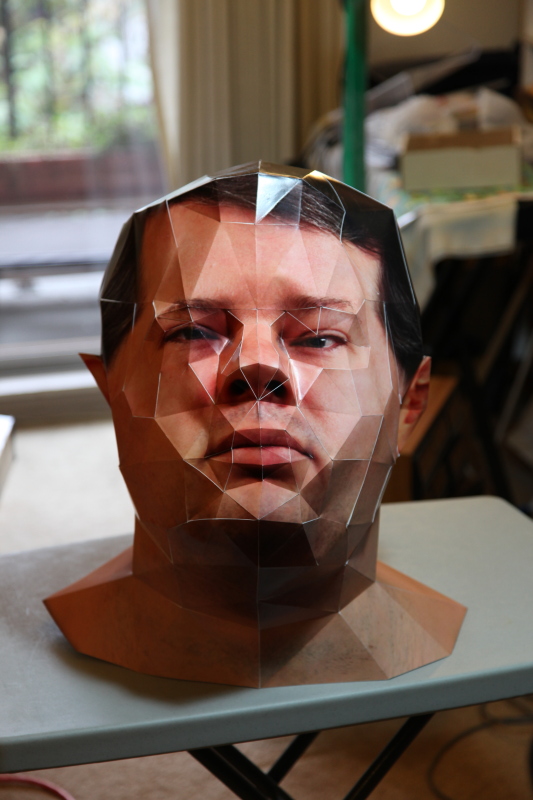
And here’s what it looks like on me (guess which picture is “before” and which is “after”):
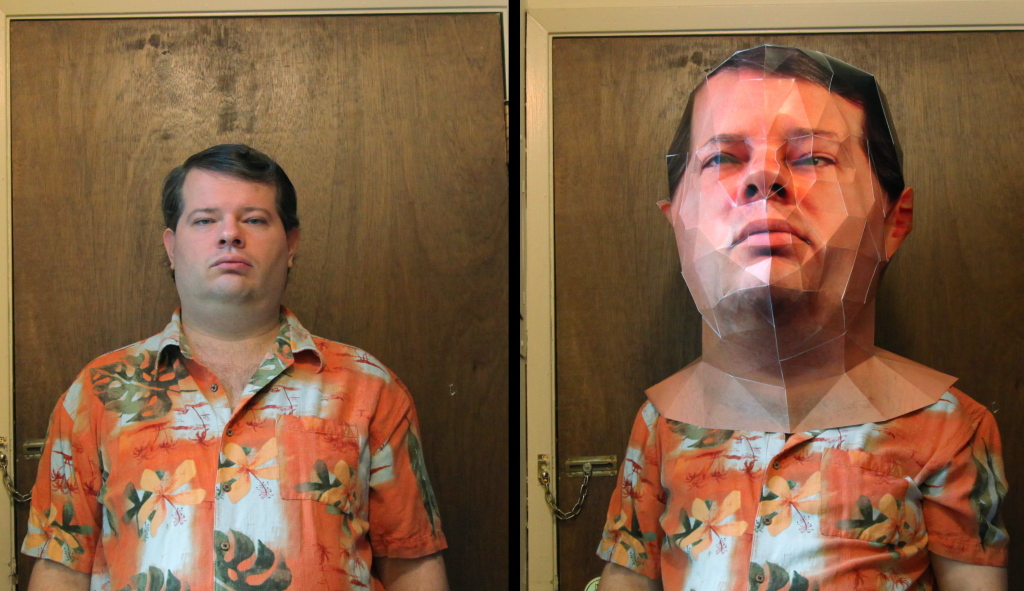
It was a rewarding project and I’m glad I did it, but it was a lot more work than I expected.
